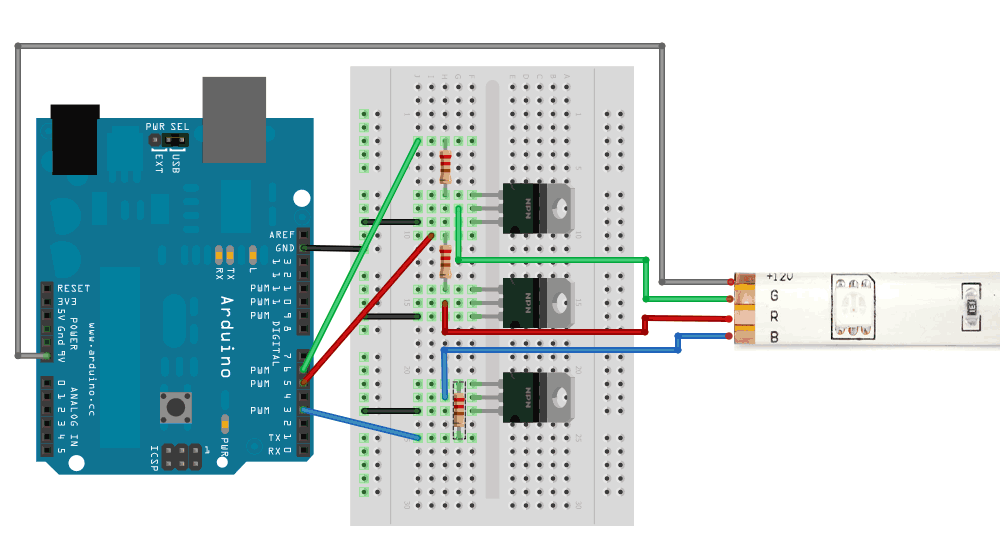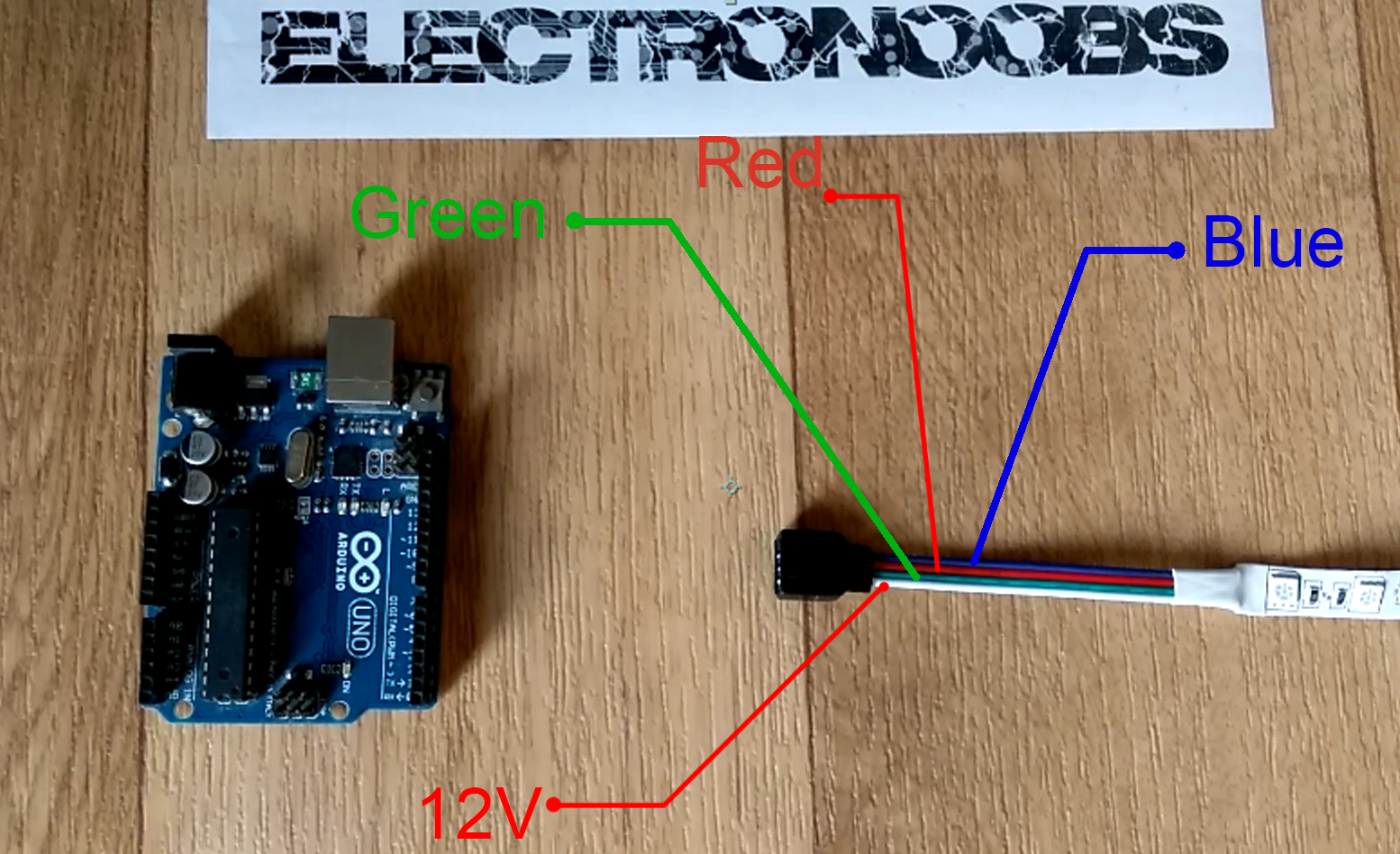
- #Arduino led strip music serial
- #Arduino led strip music driver
- #Arduino led strip music software
- #Arduino led strip music code
The LED flashes-on when the signal is above the moving average and off when below average. Flickers the built-in pin-13 LED with the sound. "World's simplest" sound activated lighting effect
#Arduino led strip music driver
It's really just a test-demonstration project but you can optionally connect a solid state relay to control an incandescent lamp, or you can wire-up a driver circuit for a "regular" LED strip, or you can modify the program to run your NeoPixels. It blinks/flickers the built-in pin 13 LED so all you all you need is the bias circuit on the input and a USB cable to load the program and power the Arduino.
#Arduino led strip music serial
Ideally the bias will read 512 but for best results run the Read Analog Serial Example with no audio signal to get the actual bias and change the Bias variable. You'll need the bias circuit for this, or almost any effect. My VU meter effect (and all of my effects) use the same-basic moving-average concept for lots of lighting-action with quiet or loud songs and with volume changes. Or, instead of just above/below average you can make multiple thresholds and make a "VU meter" effect.That's another of my older effects. With your LED strips you could very-simply do some color variations or make a "wave effect", etc, just using that above/below average concept.

Sometimes it's inverted so the lights flicker-on when the sound is below average, and sometimes one lamp is inverted so they operate oppositely with one coming-on whenever the other goes-off. For example, sometimes the 2 floods operate together. But, I do use a real version of it with some variation and 2 floodlights (controlled with solid state relays).

It's not a "main effect" that you want to "run all night". It's not that interesting so I classify it as a "special effect".
#Arduino led strip music code
I've done some lighting effects in the past but the computer I was using for that crashed and it wasn't backed up, so I lost all of that code (Of course, the effects still run.)īut, I've been working on some new ideas and I started over again with the "simplest effect". It's a "flicker effect" that flashes the LED (or light) on when the signal is above average and off when it's below average. Or to get you started, when I get home this evening (California time) I'll post some code for "The worlds simplest effect". Where are you at with your project? Do you have some LED strips and an Arduino? And, can you "program" some light-patterns (without the sound)? That might be a good place to start. It was just something that was interesting to check.) I've lusted for one, but I've never "needed one" badly enough to spend the money and I wouldn't use it that often so it would mostly be taking-up space, and I've got too much "junk" taking-up space already! (And that one time I brought something from home, it wasn't something I needed to do. I use them at work but I don't have one at home.I brought a hobby-project to work once so I could use one. Most of us are hobbyists and we don't own a 'scope. I watched part of the video without the sound because. In fact, the Arduino can be damaged by negative voltages and or it can "damage" (distort) the negative half of the audio signal. This is because the Arduino can't read the negative-half of the AC audio signal.

If you are NOT using the MSGEQ7 (or other circuitry), you'll need to bias the input (2 equal-value resistors and a capacitor). If you want more frequency bands there are FFT and FHT libraries to the frequency analysis in software. (If you want less than 7 bands/channels you can combine or ignore some of the bands).
#Arduino led strip music software
With all of the "hard work" done in hardware, all your software has to do is take those 7 readings and control the display. (The chip is mis-named a "graphic equalizer chip", which it is NOT.) For stereo you can use 2 MSGEQ7's and 2 analog inputs. It takes the audio signal, filters it into 7 frequency bands and gives you 7 DC signals, multiplexed so you can read all 7 bands with one Arduino analog input. There is a very-handy chip called the MSGEQ7. You can buy microphone boards with a microphone, preamp, and the required biased-output, but it's usually better to use a direct connection so you're not picking-up room noise.

If you wanted to use a microphone (a few millivolts) you need a preamp. That's 5V peak-to-peak which just about right for a line-line audio signal (or a headphone-level signal) but audio signals are AC so the input has to be biased. The Arduino's default analog-to-digital converter's range is 0 to +5VDC. You don't want a measurement instrument, but you CAN make an interesting spectrum analyzer-like effect. It will show the waveform, which gets boring after a couple of minutes.Ī spectrum analyzer is a frequency-domain instrument which gives you a more interesting display. It has a small display (unless you get a computer-based 'scope and plug-in a big monitor). An oscilloscope is a time-domain instrument.


 0 kommentar(er)
0 kommentar(er)
